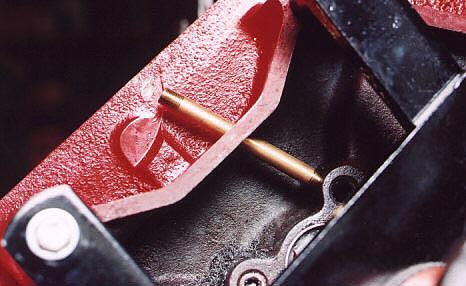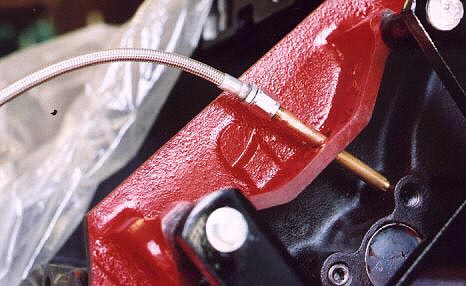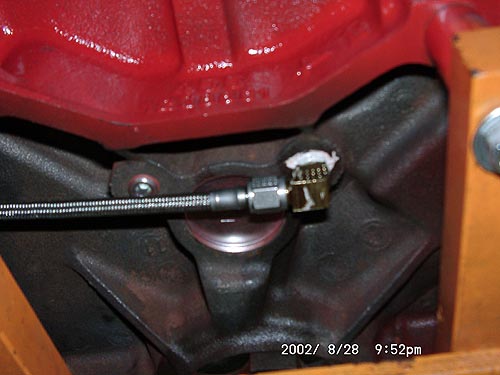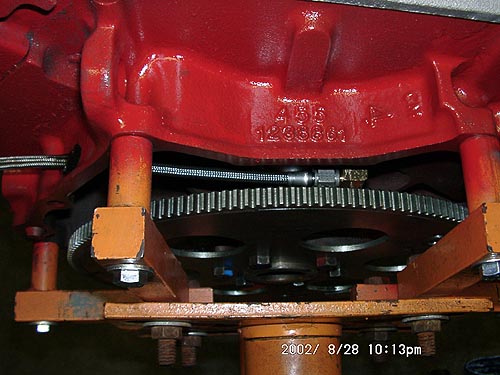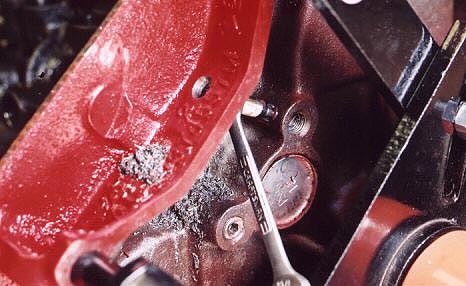
To attain a more reliable location for taking
the oil pressure signal there
is a very simple process as follows(see photos below for more detail):
Drill about a 3/4" diameter hole in the flat web section in the center
rear
of the block,just at the block and trans parting line. Using this hole as
an access hole, then drill and tap a hole for 1/8" NPT (National Pipe
Thread) in the passenger side oil gallery just in front of the rear threaded
1/4" pipe plug. Once this hole is drilled and tapped insert a brass
1/8"
by 3" or 4" pipe nipple with a good pipe sealant, preferably a
non hardening
paste with teflon. The end of the nipple will extend out of the hole in
the web area and you can attach either an electric sending unit or a fitting
and steel braided line for a mechanical gauge. As a 10 to 15 lb.
difference exists between the front and rear of the block, this will give
a
much more accurate reading of oil pressure going to the #5 main bearing.
A general rule of thumb is 10 lbs. of pressure per 1,000 rpm. As with any
modifications involving drilling or grinding, a very thorough cleaning and
deburring will be in order.

